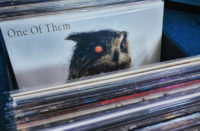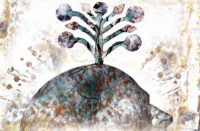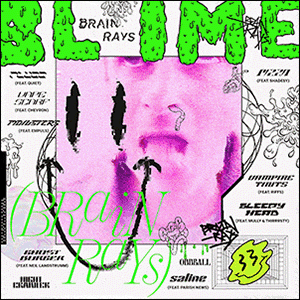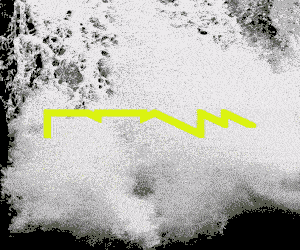Even though the festival was earthed in the eccentric and underground, there was a great sense of planning about it. The gadgets and peripherals, rooted in the sonic arts felt academic and controlled by nature, and the mutual feeling as you arrived at this outlandish festival was that of a tightly executed party. The attendees weren’t only there for a favorite DJ—the art, visuals and peripherals appeared essential to the Krake experience.
There was a heart-stopping moment as we left in the early hours of Krake’s third day from Berghain. How could a festival that prides itself on playing “challenging” music works so harmoniously with a huge audience? As we arrived, we were told of Krake’s “capacity issues”, and that entrance, even for members of the press couldn’t be guaranteed. Why? Too many people.
Since the festival began in 2010, Krake has thrown valuable light on some undeservedly neglected electronic DJs. Experimentation is at the heart of the festival and judging by the length of the entrance queue, it’s now taken very seriously—encouraging signs for niche music that holds an incredibly clique audience. Krake revealed itself to be more than an electronica festival billed for “music lovers” but an arts festival with a capital A—it was certainly resourceful about coming up with different novelties to occupy its attendees.
The Krake Festival was held in two areas of the Friedrichsain district, Berlin—Urban Spree and Berghain Kantine. Urban Spree, a converted open air area, boasted an art gallery with synthesised peripherals and gadgets for audience members and artists to observe and manipulate. Urban Spree’s Art gallery functioned like a walk-in Dewanatron expo, the installations free for the audience to have a play around with. Gadgets appeared to be the focus here. There was even a Mr-808 Interactive show, who did an astonishing live electronica performance with mechanical robots. Toward the other side of Urban Spree, a huge projector displayed manipulated animations of images, one spectacularly made by Robert Henke, “an image behaving like a living organism… leaving complex traces of light”.
Our press officer spoke about Krake focusing on “explorative” sound and highlighting up and coming trends in the techno scene. On reflection, it was difficult to see, precisely, just what those trends were. Yes, the musicians playing weren’t mainstream or headline topping names and you have to feel the reason for that is because this brand of electronica will never top headlines or ever become mainstream—it was purposefully experimental and odd, and appealing to an audience outside of this festival would always prove difficult. It’s simply not commercial music and it never will be.
So, the notion of this music becoming trendy due to the exposure Krake offered didn’t wash over me—Krake’s purpose was to be different and out there. For that to become trendy and somehow up and coming and well known, would go against the nature of the festival. However, Krake’s focus on the explorative felt absolutely correct and while I mingled with some of the locals, they spoke of Krake’s impact being widely felt throughout Berlin. “Krake’s impact shouldn’t be understated”, said a local, “I think these kinds of festivals are becoming very important”.
It was a soulful expression—experimentation has been at the heart of electronica throughout its history and this felt central to Krake’s intentions.
Even though the festival was earthed in the eccentric and underground, there was a great sense of planning about it. The gadgets and peripherals, rooted in the sonic arts felt academic and controlled by nature, and the mutual feeling as you arrived at the festival was that of a tightly executed party. The attendees weren’t only there for a favorite DJ—the art, visuals and peripherals appeared essential to the Krake experience.
Berghain was in an ambient mood just as we arrived—Inner 8, warmed his audience up with sweeping ambient vistas before making the walls shake with his muscular minimal breakcore. As Ken Karter started, so too did a female dancer in the middle of the audience, who was naked but with an octopus splayed on top of her head, resembling something of the ‘kraken’ beast spraying ‘ink’ (water) amongst the attendees, who seemed to dance even more joyously as they were smacked with ‘ink’.
Krake’s museum of electronic culture was a searing achievement. It provided the awe of stunning visual art and the burning intensity of a Berghain rave.
The Krake Festival ran 3rd – 9th August 2015. Special thanks to Modern Matters for access. Joi Bix Photography & Marco Microbi Photography





















